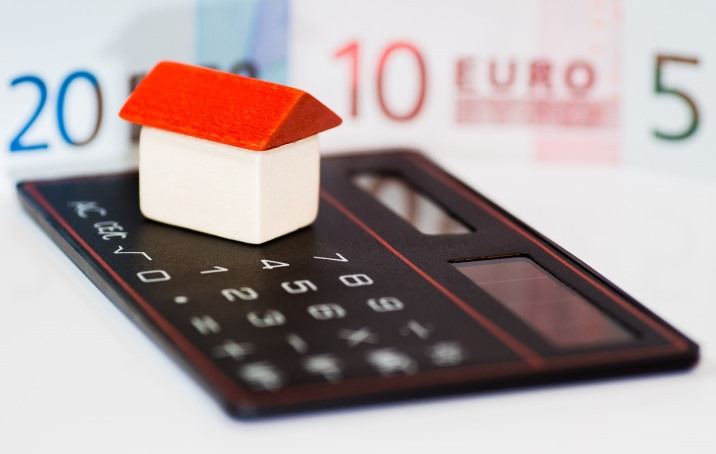What is Euribor and how is it calculated?
Experts | 10.16.2017 | Àgueda Canet

The concept of Euribor has become part of our everyday vocabulary. When calculating the rate of interest of a mortgage, loan or savings product, the term “Euribor” is always mentioned.
Euribor was created in 1999 and is an acronym for “EURO InterBank Offered Rate”, It indicates the average rate of interest at which a large number of European banks offer to lend each other short-term funds to lend money to individuals and companies.
In this post we will help you understand what Euribor means exactly and how it is calculated, as it has an impact on all our debts and some of our savings products.
The importance of Euribor
Euribor is used as a reference rate for loans and products that involve future interest payments. This explains why it is so important in everyday banking products. The most commonly used official reference rate is one-year Euribor. Before the Euro was introduced, several reference interest rates were used in Andorra but most credit transactions were indexed to LIBOR (London InterBank Offered Rate) or the ABA rate (this used to be set by Andorran banks but has now been abandoned).
And how is Euribor calculated?
In fact, Euribor is not just a rate of interest but the weighted average of several interest rates. This average rate is calculated based on the daily interest rates offered by 50 credit institutions on the interbank market selected by the European Banking Federation based on their market valuations. Reuters, a UK-based agency, is responsible for calculating and publishing the Euribor on a daily basis.
Euribor is calculated based on the information supplied by the reference banks every day before 10.45 a.m. Reuters calculates Euribor at 11 a.m. every day. The highest and lowest 15% of reference interest rates are eliminated, and the remainder are averaged and the result is rounded to 3 decimal places. In order to ensure that the calculation process is as transparent as possible, Reuters publishes both the results and the interest rates used in the calculation.
There are 8 Euribor interest rates with different maturities (1 week, 2 weeks, 1 month, 2 months, 3 months, 6 months, 9 months, 12 months) which are also published daily.
If you wanted to know, say, what interest rate you would pay on a loan linked to 1-year Euribor +4%, you would have to add the published Euribor rate for a one-year maturity (a percentage figure rounded to three decimal places) to these 4% on the day that the loan is completed or revised. If the Euribor rate is negative on that day, most loans and mortgages will use Euribor = 0 as reference rate, so the resulting interest rate would be the basic rate of 4%.
The European Money Markets Institute is working towards changing the current calculation method to include transactions and not just the institutions’ quotes, to offer more transparency and to match the market reality more closely. Neither the final calculation method nor the date on which these changes, which have yet to be defined, will become effective have been announced as yet.
What banks set Euribor?
The banks responsible for setting Euribor rates are all leading institutions with high market valuations. The selection is made by the European Banking Federation through its supervision committee. At present, Euribor is calculated based on the information provided by the following institutions*:
Belfius (BEL)
BNP – Paribas (FR)
Crédit Agricole S.A. (FR)
HSBC France (FR)
Natixis / BPCE (FR)
Société Générale (FR)
Deutsche Bank (GER)
DZ Bank (GER)
National Bank of Greece (GRE)
Intesa Sanpaolo (ITA)
Monte dei Paschi di Siena (ITA)
Unicredit (ITA)
Banque et Caisse d’Épargne de l’État (LUX)
ING Bank (HOL)
Caixa Geral De Depósitos (POR)
Banco Bilbao Vizcaya Argentaria (ESP)
Banco Santander (ESP)
CECABANK (ESP)
CaixaBank S.A. (ESP)
Barclays Capital (Other EU banks)
J.P. Morgan Chase & Co. (USA)
Now that you know how interest rates are calculated for credit transactions, we invite you to discover our range of loans and mortgages. If you require more information or have any queries, please contact our customer service, TeleBanc, on +376 884 884 or visit any of our branches.
*Source: http://es.euribor-rates.eu
Information on the processing of personal data
In compliance with Law 15/2003 of 18 December on protection of personal data, the customer authorizes that the applicant’s personal data entered on this form will be incorporated into files owned and managed by MORA BANC GRUP, SA – MORA BANC, SAU (hereafter referred to as “MoraBanc”) to process the requested service and, if necessary, to comply with the contracts finally entered into, and also to ensure correct operational procedures.
The applicant expressly authorises MoraBanc to send him/her commercial and promotional communications for products and services and information on the Bank itself, social or other activities, in hardcopy by post or by electronic means (among others, short messages (SMS) to mobile phones, e-mail, etc.). This consent can always be withdrawn, without retroactive effect.
The fact of filling out this form implies that the applicant acknowledges that the information and personal data provided are true, accurate and correct; otherwise, MoraBanc declines all responsibility for the lack of truthfulness or correctness of the data.
The applicant authorises the data provided to be communicated or shared with third parties forming part of the MoraBanc business group, entities which are primarily active in the financial, insurance and service sectors. The applicant is considered as having been informed of this transfer of information by means of this clause. The applicant accepts that he/she may be sent information on any product or service marketed by these companies.
The data processing manager is MoraBanc. The applicant is hereby informed that the rights of access, rectification, suppression or opposition may be exercised in the terms established in current legislation.






